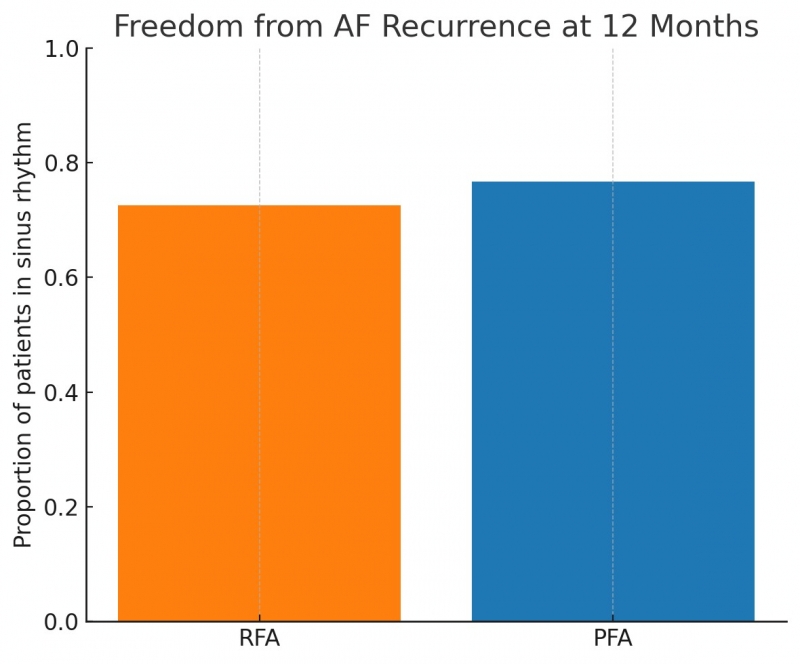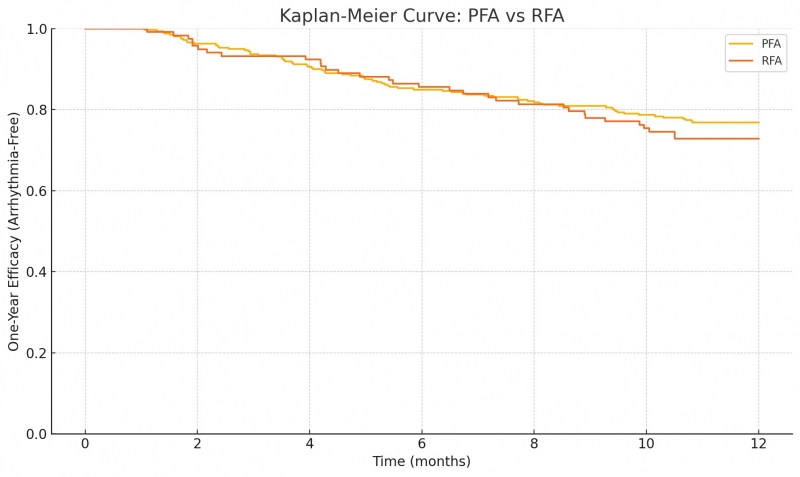COMPARISON OF PROCEDURAL WORKFLOW, SAFETY, AND ONE-YEAR EFFICACY OF CATHETER ABLATION OF ATRIAL FIBRILLATION USING RADIOFREQUENCY AND PULSED-FIELD ENERGY
Introduction
Pulsed-field (PF) ablation is an emerging non-thermal technique for atrial fibrillation (AF) ablation. This retrospective study compares baseline characteristics, procedural data, complication rates, and one-year outcomes of PF versus conventional radiofrequency (RF) ablation.
Methods
This single-center, observational, non-randomized cohort study included all consecutive patients undergoing AF ablation with PF (Farapulse, BSCI, USA) or RF (SmartTouch or QDot, Biosense-Webster, USA). In paroxysmal AF, only PVI was performed in all patients. In non-paroxysmal AF, posterior wall and mitral isthmus ablation were systematically done in the PFA group, whereas in the RF group, ablations beyond PVI were left to the operator’s discretion. All patients underwent 24-hour Holter monitoring and clinical follow-up at 3, 6, 9, and 12 months after ablation.
Results
A total of 437 patients were included, 319 in the PFA group and 118 in the RFA group. Both groups were broadly comparable. RFA patients were slightly older (65.4 ± 10.9 vs. 63.1 ± 10.5 years), with similar BMI (29.8 ± 5.0 vs. 29.5 ± 5.2 kg/m²). Paroxysmal AF was present in 61.9% of RFA and 49.8% of PFA patients. History of heart failure occurred in 27.1% vs. 21.9%, respectively. Mean procedural time was 139.6 ± 54.3 min in RFA and 60.2 ± 19.4 min in PFA (p < 0.0001). Complications occurred in 13.6% vs. 11.3%. At 12 months, freedom from AF was 72.5% after RFA and 76.7% after PFA.
Conclusion
PFA was associated with markedly shorter procedure and LA dwelling times, slightly fewer complications, and higher one-year sinus rhythm maintenance compared to RFA. These findings support its safety, efficiency, and clinical effectiveness as a standard approach for AF ablation.



